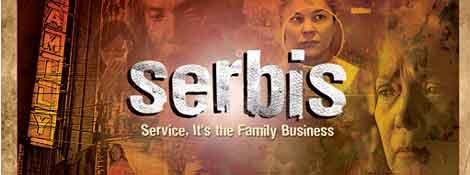Philippine Movies and Philippines Cinema
Watching a movie is a wonderful way to quickly bring up your mood regardless of the thrust of the film. As they say, entertainment is one of the most dynamic industries anywhere in the world and acting/performing is one of the most difficult jobs ever.
But, for every industry, there exist the best and with their best, there exists in return great rewards.
Movies all over the world have their own way of conveying certain messages to the viewers. Philippine movies are on the way to being noticed worldwide by improving the quality of the movies being produced.
 Philippine Movies - "Serbis" |
Among Philippine arts, cinema is the youngest and still is considered as one of the popular forms of entertainment among the Filipinos. More than 200,000 Filipinos are considered employed as actors, actresses, directors, writers, and production assistants, which are crucial in film making.
The formative years of Philippine movies, starting from the 1930s, were a time of discovering film as a new medium of expressing artworks. Scripts and characterizations in films came from the popular theater shows and familiar local literature. Nationalistic films were also quite popular, although they were labeled as being too subversive.
Philippine movies, coming out of one of Asia's earliest film industries, remains undisputed in terms of the highest level of theater admission in Southeast Asia. Over the years, however, the film industry has registered a steady decline in the movie viewership. Although the industry has undergone turbulent times, the 21st century saw the rebirth of independent film making through the use of digital technology, and a number of Philippine movies have once again earned international recognition and prestige.
During the Japanese Occupation, film making was suddenly put to a halt. The Japanese brought with them their own films, but this was not appealing to the local audience. For this reason, Japanese propaganda offices hired several local filmmakers, including Gerardo de Leon, to make propaganda pictures that extoll Filipino-Japanese friendship. One of these propaganda films was the Dawn of Freedom, which was directed by Abe Yutaka and Gerardo de Leon.
In 2006 and 2007, Filipino filmmakers began making digital Philippine movies. Donsol, by director Adolf Alix, made waves with his debut digital film (which included underwater cinematography) set in Donsol, a fishing town that serves as a sanctuary to rare white whale sharks. Other talents of note include Jeffrey Jeturian, Auraeus Solito, and Brillante Mendoza’s 2007 Filipino version of Danish Dogme and Italian cinéma vérité (Slingshot). Lav Diaz is the leading figure in experimental Tagalog films. His works—including excruciatingly long epics about Filipino life (some of which run up to 10 hours)—often test the endurance of viewers.
Although Filipino digital films are made in almost no time and with meager budget, they are strongly represented in international film festivals. Numerous works of a new breed of filmmakers had their films seen at the prestigious film festivals in Berlin, Cannes, Venice, Vienna and Rotterdam. Several others won prizes and awards in various film festivals around the world.
In 2007, a Filipino short film entitled Napapanggap (Pretend) by Debbie Formoso, a recent graduate of MFA Master of Film Art at LMU Loyola Marymount University, in Los Angeles, had a successful run in a number of US film festivals. Several other short films, including Pedro "Joaquin" Valdes's Bulong (Whisper), as well as documentaries garnered international attention and honors.
In 2008, Serbis (Service) became the first Filipino full-length film to compete in the Cannes Film Festival since internationally acclaimed director Lino Brocka's Bayan Ko: Kapit sa Patalim (My Country: Gripping the Knife's Edge) in 1984. Another milestone in Philippine movies took place that same year as local audience witnessed the first full-length 3D animated film, top-billed by Cesar Montano and Regine Velasquez as voices behind the lead characters. The film was done by over 400 Filipino animators, who produced more than 120,000 drawings that will run in 1,922 scenes equivalent to 8,771 feet of film. A few weeks later, the Philippine movies industry took center stage for the first time in the 6th Edition of the Festival Paris Cinema 2008 in France.
To encourage production of high-quality movies, the Philippine government started giving tax rebates on films. However, only nine of the 150 films produced from January 2003 to January 2006, received such a rebate. In 2001, President Gloria Macapagal Arroyo asked town and city mayors to reduce the entertainment tax but only few of them did.
In order to build up and stimulate the Philippine movies industry, some Congressmen and Senators recently have authored a number of proposals and legislation pending ratification by the Philippine Congress. Many of the bills seek to ease the multiple taxes on producers, theater operators and patrons. One of the bills, for instance, proposes to exempt from the 30-percent amusement tax on all locally produced movies classified by regulators as for "general patronage" or "parental guidance-13." Another bill seeks to exempt local producers from the 12-percent value-added tax (VAT) on imported film making raw materials and equipment.


